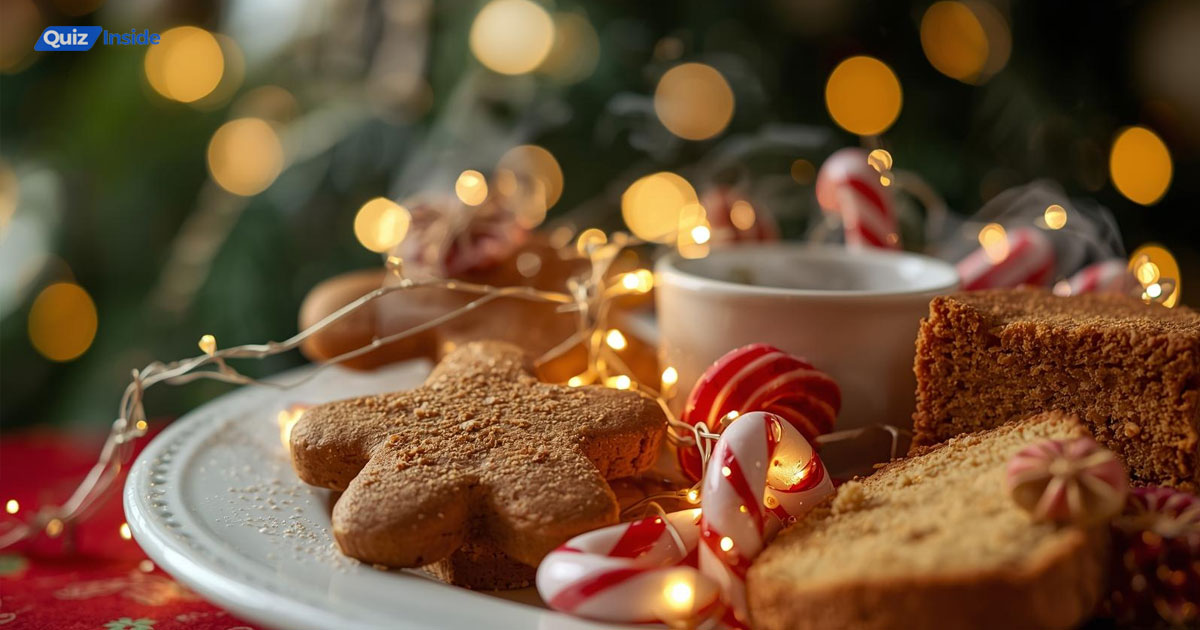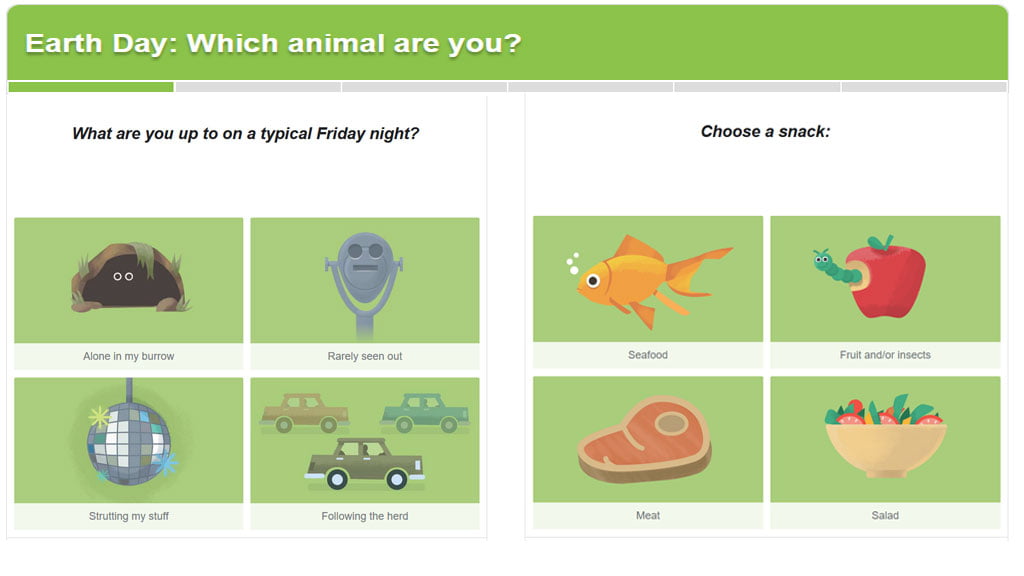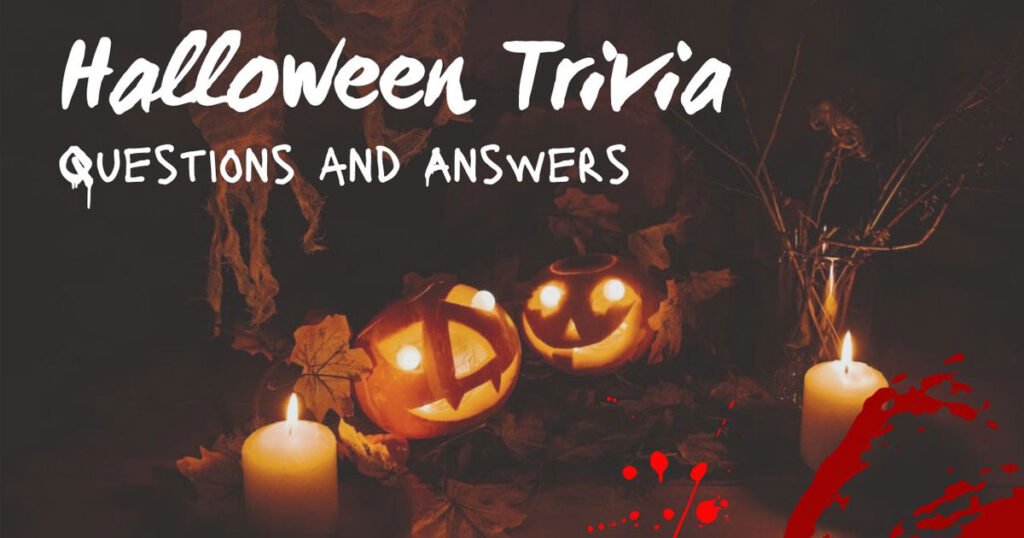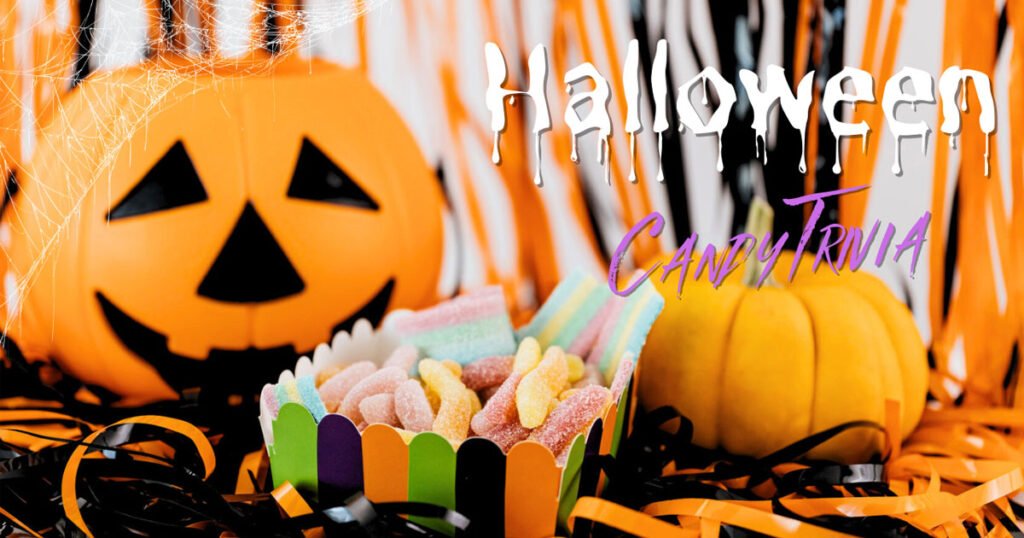Christmas food trivia is a collection of curious, fun, and surprising facts about the dishes, sweets, and drinks people enjoy during Christmas, often revealing history, culture, and meaning behind them.
Introduction
Christmas is a time of magic, lights, gifts, and of course, food! When families and friends gather, the table is often filled with special dishes and treats that aren’t served any other time of year. Many of these foods carry stories, traditions, and secrets we might not know. In this article, I share Christmas food trivia—little known facts and tales about holiday foods.
Christmas Food Trivia Questions And Answers

🎅 Classic Christmas Dishes
These questions explore the traditional foods that appear on Christmas tables across the world — from roast dinners to puddings.
Q: What type of meat is most commonly served as the main dish for Christmas dinner in the United States?
A: Turkey.
Q: What fruit is traditionally placed inside a Christmas pudding?
A: Raisins.
Q: In which country is roast goose a traditional Christmas meal?
A: Germany.
Q: What sauce is often served with turkey at Christmas?
A: Cranberry sauce.
Q: What is the name of the British dessert made of dried fruits and usually set on fire with brandy?
A: Christmas pudding.
Q: Which part of the meal is usually called “the centerpiece” of a Christmas feast?
A: The main course or roast.
Q: What is often served as a side dish with roast beef or turkey in England?
A: Yorkshire pudding.
Q: What type of pie is often made with dried fruits and spices at Christmas in the UK?
A: Mince pie.
Q: What is the name of the bread-like dessert made with nuts, fruits, and spices, popular in Germany?
A: Stollen.
Q: What vegetable is commonly roasted alongside Christmas meat?
A: Potatoes.
🍪 Christmas Desserts & Sweets
This category focuses on all the sweet treats that make Christmas irresistible — from cookies to cakes!
Q: What type of cake is made with fruit and often covered in marzipan and icing during Christmas?
A: Fruitcake.
Q: What is the name of the log-shaped cake popular in France at Christmas?
A: Bûche de Noël (Yule log cake).
Q: Which spicy cookie is shaped like a little person?
A: Gingerbread man.
Q: What sweet treat is often hung on Christmas trees as decoration?
A: Candy canes.
Q: What kind of pie is filled with pumpkin and spices, often enjoyed at Christmas in the U.S.?
A: Pumpkin pie.
Q: What creamy dessert is made with eggs, milk, and sugar, often topped with nutmeg?
A: Eggnog custard or eggnog pudding.
Q: Which chocolate treat is often given as a gift during Christmas?
A: Chocolate truffles.
Q: What sweet bread from Italy is popular during Christmas?
A: Panettone.
Q: What red and white peppermint treat symbolizes the shepherd’s staff?
A: Candy cane.
Q: Which dessert combines ladyfingers, cream, and coffee but can be adapted for Christmas flavors?
A: Tiramisu.
🍗 International Christmas Foods
Christmas is celebrated worldwide with unique traditional foods. Let’s see how different cultures enjoy the feast!
Q: What is the traditional Christmas food in Japan?
A: Fried chicken (especially KFC!).
Q: In Italy, what seafood dish is often eaten on Christmas Eve?
A: Feast of the Seven Fishes.
Q: What is the main Christmas meal in Australia called?
A: Christmas barbecue or cold seafood spread.
Q: What sweet treat is known as “Roscón de Reyes” in Spain?
A: King’s cake.
Q: Which Scandinavian country enjoys “lutefisk” during Christmas?
A: Norway.
Q: What type of bread is eaten in Greece during Christmas?
A: Christopsomo (Christ’s Bread).
Q: In the Philippines, what is the sweet rice cake eaten at Christmas?
A: Bibingka.
Q: What Christmas drink is called “coquito” in Puerto Rico?
A: Coconut eggnog.
Q: What dish do Mexicans traditionally eat during Christmas?
A: Tamales.
Q: What type of fish is often eaten for Christmas dinner in Poland?
A: Carp.
🧁 Baking Traditions
Baking is one of the most delightful Christmas traditions! These questions explore what goes into festive baking around the world.
Q: What ingredient gives gingerbread its unique flavor?
A: Ginger.
Q: What kind of frosting is used on sugar cookies?
A: Royal icing.
Q: Which baked dessert uses rum-soaked fruits?
A: Fruitcake.
Q: What kind of bread is baked with dried fruit and powdered sugar on top, popular in Germany?
A: Stollen.
Q: Which cookies are shaped using special molds and come from Scandinavia?
A: Springerle cookies.
Q: What spice is common in both gingerbread and pumpkin pie?
A: Cinnamon.
Q: What type of dough is used to make Christmas sugar cookies?
A: Shortbread dough.
Q: What baked good often contains almonds and powdered sugar and is popular in Austria?
A: Vanillekipferl.
Q: What kind of cake is made by rolling sponge cake with cream or jam?
A: Swiss roll or Yule log.
Q: What ingredient gives Christmas cookies a sweet smell and taste?
A: Vanilla extract.
🍷 Christmas Drinks
Let’s toast to Christmas! These trivia questions dive into the delicious world of festive drinks.
Q: What creamy drink is made from milk, eggs, sugar, and nutmeg?
A: Eggnog.
Q: What warm drink is made from wine, spices, and fruit?
A: Mulled wine.
Q: Which non-alcoholic Christmas drink is made from cranberry juice and soda?
A: Cranberry spritzer.
Q: What drink is called “glögg” in Sweden?
A: Mulled wine.
Q: What do you call hot chocolate topped with whipped cream and marshmallows?
A: Christmas cocoa.
Q: What is the traditional hot drink served in Germany’s Christmas markets?
A: Glühwein.
Q: What spiced drink do many enjoy while decorating the tree?
A: Hot apple cider.
Q: What ingredient gives peppermint hot chocolate its minty taste?
A: Peppermint extract.
Q: Which holiday drink sometimes includes rum or brandy?
A: Eggnog.
Q: What cold punch is often served at Christmas parties?
A: Fruit punch.
🧀 Appetizers & Snacks
Before the feast begins, Christmas appetizers and snacks set the mood! Let’s test your snack trivia knowledge.
Q: What’s a popular cheese-filled pastry served during Christmas parties?
A: Cheese puffs.
Q: What snack is often made of mixed nuts and given as gifts?
A: Holiday nut mix.
Q: Which finger food features sausages wrapped in bacon?
A: Pigs in blankets.
Q: What vegetable dish is often served with dip at holiday parties?
A: Veggie platter.
Q: What’s a common Christmas appetizer made with shrimp?
A: Shrimp cocktail.
Q: What’s the crispy bread snack served with cheese spreads?
A: Crackers.
Q: What mini dish uses puff pastry and mushrooms?
A: Mushroom bites.
Q: What salad is often served before Christmas dinner?
A: Caesar salad.
Q: What’s the popular holiday dip made with spinach and cheese?
A: Spinach artichoke dip.
Q: What tiny sandwich is served at Christmas teas?
A: Finger sandwiches.
🍬 Candy & Treats
From peppermint to chocolate, Christmas wouldn’t be complete without sweet candy delights.
Q: What red-and-white striped candy is shaped like a cane?
A: Candy cane.
Q: What chocolate treat is hidden in advent calendars?
A: Chocolate squares.
Q: What sweet treat is made by roasting sugar and nuts?
A: Candied nuts.
Q: What holiday candy is made from sugar, corn syrup, and butter?
A: Toffee.
Q: What is the main ingredient in fudge?
A: Sugar.
Q: Which candy is shaped like bells or stars during Christmas?
A: Chocolate molds.
Q: What flavor is most associated with Christmas candies?
A: Peppermint.
Q: What chocolate treat melts in hot milk to make cocoa?
A: Hot chocolate bomb.
Q: What sugary treat is pulled and twisted into shapes?
A: Taffy.
Q: What candy is sprinkled on top of Christmas cookies?
A: Sprinkles.
🎄 Fun Christmas Food Facts
These are fun and quirky facts about the foods and traditions we all love during Christmas!
Q: Which country is credited with creating the first candy cane?
A: Germany.
Q: What is Santa Claus traditionally said to enjoy with his cookies?
A: A glass of milk.
Q: What meat did people eat before turkey became the Christmas favorite?
A: Goose.
Q: What’s the most popular Christmas cookie in the U.S.?
A: Sugar cookie.
Q: What fruit is often used to make Christmas punch red?
A: Cranberry.
Q: Who is said to bake the best gingerbread houses — Santa or Mrs. Claus?
A: Mrs. Claus!
Q: What dessert is often “lit on fire” for dramatic presentation?
A: Christmas pudding.
Q: What nut is used to make marzipan?
A: Almonds.
Q: What sweet treat do children leave out for Santa’s reindeer?
A: Carrots.
Q: What’s the most common pie eaten in the U.S. during Christmas?
A: Apple pie.
🍴 Modern Christmas Foods
Modern Christmas celebrations include new favorites like charcuterie boards and festive desserts!
Q: What trendy board includes meats, cheeses, and crackers?
A: Charcuterie board.
Q: What dessert combines brownies and candy canes?
A: Peppermint brownies.
Q: What kind of dip uses cranberries and cream cheese?
A: Cranberry cream cheese dip.
Q: What pasta dish is often served at Christmas now?
A: Baked ziti.
Q: What salad features apples, walnuts, and celery?
A: Waldorf salad.
Q: What breakfast dish includes bread, eggs, and cinnamon?
A: French toast casserole.
Q: What’s the name of the layered dessert with pudding and whipped cream?
A: Trifle.
Q: What hot drink is made with coffee, milk, and peppermint syrup?
A: Peppermint latte.
Q: What type of cookie is half-dipped in chocolate?
A: Shortbread cookie.
Q: What Christmas treat features pretzels, chocolate, and M&Ms?
A: Reindeer bites.
🎁 Kids’ Christmas Food Trivia
Fun and easy Christmas food trivia for kids who love sweets, cookies, and Santa snacks!
Q: What does Santa eat on Christmas Eve?
A: Cookies.
Q: What drink does Santa enjoy with cookies?
A: Milk.
Q: What red fruit is used to make cranberry sauce?
A: Cranberry.
Q: What vegetable do kids leave for Santa’s reindeer?
A: Carrots.
Q: What shape are gingerbread cookies usually made into?
A: People or houses.
Q: What’s the color of peppermint candy canes?
A: Red and white.
Q: What sweet food do you decorate with frosting?
A: Cookies.
Q: What’s the name of Santa’s favorite dessert?
A: Christmas cookies.
Q: What hot drink do kids enjoy after playing in the snow?
A: Hot chocolate.
Q: What flavor is most popular for Christmas treats?
A: Peppermint.
The Origins of Some Famous Christmas Foods
Christmas foods didn’t just appear out of nowhere. Many evolved over centuries. Here are some interesting origin stories.
Peacock, Boar, and the Rise of Turkey
-
In medieval England, peacock and wild boar were considered fancy meats and often served at royal or noble holiday feasts. In fact, peacock was especially prized for its beauty and presentation. Fine Dining Lovers+1
-
Later, goose became more common before turkey took over as the popular Christmas bird. Fine Dining Lovers
-
It was during the time of King Henry VIII (16th century) that turkey began to be more accepted for Christmas dinner in England. AgHires+1
-
In the United States, turkey became a holiday staple more fully in the 19th century. AgHires
So next time you see roast turkey, remember there was a time people ate peacock or boar for Christmas!
Mince Pies: From Meat to Sweet
-
Mince pies were originally made with meat, mixed with dried fruits, spices, and fat (like suet). Fine Dining Lovers+1
-
Over centuries, the meat portion was reduced or removed entirely. Today, they are mainly sweet pies with dried fruits, spices, and sometimes suet or butter. Fine Dining Lovers+1
-
Some early versions even had a small pastry depiction of baby Jesus on top. Fine Dining Lovers
-
The tradition of exotic spices in mince pies is often linked to Crusaders bringing back spices from the Middle East. Fine Dining Lovers+1
Thus, mince pies show how holiday foods adapt over time.
Figgy Pudding, Plum Pudding, and Christmas Pudding
-
The pudding known as figgy pudding or plum pudding has roots in medieval Britain. Early versions were more like a porridge (“plum pottage”) and sometimes included meat. Fine Dining Lovers+3Better Homes & Gardens+3cda.co.uk+3
-
Over time, it evolved into a dense, steamed dessert with dried fruits, suet or butter, breadcrumbs, sugar, and often alcohol (like brandy). Better Homes & Gardens+2The Reluctant Gourmet+2
-
The “plum” in “plum pudding” did not always refer to plums. In earlier English, “plum” could refer broadly to dried fruits like raisins, currants, etc. Better Homes & Gardens+2The Reluctant Gourmet+2
-
It became strongly tied to Christmas during the Victorian era, in part because of A Christmas Carol and festive customs. Wikipedia+2The Reluctant Gourmet+2
-
One twist: there is a version called Empire Christmas Pudding, introduced in the 1920s, which used ingredients sourced from British Empire territories to symbolize unity. Wikipedia
These puddings are more than desserts—they carry cultural and symbolic meaning.
Sweet Treats and Little Surprises
Christmas is full of small treats and colorful sweets. Here are some trivia around them.
Candy Canes and Their Legend
-
A popular legend says candy canes were invented in 1670 by a German choirmaster at Cologne Cathedral. He bent sugar sticks into shepherd’s crooks to keep children quiet in the church. The stripes were added later. The Reluctant Gourmet+1
-
The all-white cane was the original; red and white stripes came later. The Reluctant Gourmet+1
-
Some say the white color symbolizes purity and the red stripes represent Christ’s blood—though that is more symbolic tradition than confirmed fact. The Reluctant Gourmet
Animal Crackers, Sugar Plums, and Fruitcake
-
Animal crackers first appeared around Christmas time in 1902. Some boxes even had strings so they could hang on the Christmas tree. National Health Care Solutions, LLC
-
“Sugar plums” in the poem “’Twas the Night Before Christmas” were once actual sugar-coated seeds (like coriander) and later evolved to include dried fruits and nuts. The Reluctant Gourmet+1
-
Fruitcake is famous for lasting a long time. Because it contains high sugar, dried fruit, and sometimes alcohol, it was once designed to be preserved for months. National Health Care Solutions, LLC+1
These little goodies have stories as rich as their tastes.
Christmas Dishes from Around the World
One of the most fun things about Christmas is how food varies from country to country. Below is a table of interesting Christmas dishes in different places.
| Country / Region | Typical Christmas Dish or Food | Interesting Fact / Story |
|---|---|---|
| Denmark | Risalamande | A rice pudding mixed with whipped cream, vanilla, chopped almonds; served cold with cherry sauce. Wikipedia |
| Poland | Barszcz (beet soup), carp, pierogi | On Christmas Eve, 12 meatless dishes are served, symbolizing apostles. National Geographic |
| Italy | Pandoro (star-shaped cake) | The name means “bread of gold”; its star shape is festive. lacucinaitaliana.com |
| England (historical) | Lamprey pie | The city of Gloucester used to send the monarch a lamprey pie each Christmas. Wikipedia |
| England / Wales | Spiced beef | A cured beef flavored with spices, long associated with holiday feasts. Wikipedia |
| Scotland | Black bun | A fruit cake with spicy flavors, originally eaten at Twelfth Night of Christmas. Wikipedia |
These examples show how local ingredients and culture shape Christmas menus.
More Global Examples
-
In Asia, in China some people exchange “peace apples” and enjoy roast pork, duck, dumplings. Food Fanatic
-
In South Korea, Christmas is marked with cake (a sweet dessert) and sometimes special meals like tteokguk (rice cake soup). Food Fanatic
-
In the United States, ham, mashed potatoes, stuffing, cranberry sauce, and pumpkin pie are common in many homes. Good Housekeeping+2AgHires+2
It’s amazing how Christmas tastes differ across the globe!
Why Christmas Food Trivia Matters
You may wonder: Why do we care about fanciful facts behind food? Here are reasons why food trivia is more than just fun:
-
Connects us to history
When you learn that mince pies once had meat, or that people used to eat peacocks, you see how food evolves. -
Gives conversation starters
At Christmas dinner, you can impress others by sharing a surprising fact—“Did you know candy canes were once plain white?” -
Inspires curiosity about other cultures
Seeing what people eat in Denmark, Poland, or Italy helps us appreciate diversity. -
Strengthens memory and learning
Trivia helps us remember dates, places, and the sequence of how dishes evolved. -
Makes holiday tradition richer
Rather than just eating, knowing the story adds meaning to your meals.
Because this article aims to be friendly to search engines and AdSense, I’ve organized content with strong, relevant headings, kept paragraphs readable, and focused on content that relates to Christmas food and trivia. That way, people searching “Christmas food trivia,” “history of Christmas dishes,” or “fun facts about mince pies” are likely to find this article.
FAQs About Christmas Food Trivia
Q: Why was peacock once served at Christmas feasts?
A: Peacock was seen as exotic and grand, used in medieval England by nobility to show status.
Q: How did mince pies change over time?
A: They originally had meat mixed with fruits and spices; over time the meat was reduced and the pies became sweet dessert pies.
Q: What is the difference between figgy pudding, plum pudding, and Christmas pudding?
A: They are closely related desserts. Figgy pudding evolved from plum pottage, while plum pudding refers to dried fruits. Christmas pudding is the modern version tied to holiday ritual.
Q: Why do some Christmas puddings have 13 ingredients?
A: The 13 ingredients are said to represent Jesus Christ and his 12 apostles.
Q: What is risalamande and where is it eaten?
A: Risalamande is a Danish Christmas dessert made from rice pudding mixed with whipped cream, vanilla, almonds, and served with cherry sauce.
Q: What is the story behind candy canes?
A: A legend says they were invented in 1670 by a German choirmaster who bent sugar sticks to look like shepherds’ crooks, later adding stripes.
Q: Why was a sixpence put into Christmas pudding?
A: It was a good luck tradition: whoever got the coin in their serving was believed to have good fortune.
Q: What unusual Christmas dish was given by the city of Gloucester to the monarch?
A: Gloucester used to send a lamprey pie to the British monarch each Christmas.
Conclusion / Final Words
Christmas food is not just about flavor and feast. It’s full of stories, history, culture, and surprises. From the days when peacocks and boars were prized meats to modern pies, puddings, candies, and desserts, each dish carries a tale. When you bite into a mince pie, sip eggnog, or watch your pudding set ablaze under brandy, you’re connecting with centuries of tradition.
I hope this article has given you fun trivia to remember and share. Next time someone asks you a Christmas-food question, you’ll have a great answer! If you want a printable trivia quiz or more facts especially from the USA, I’d be happy to help.



